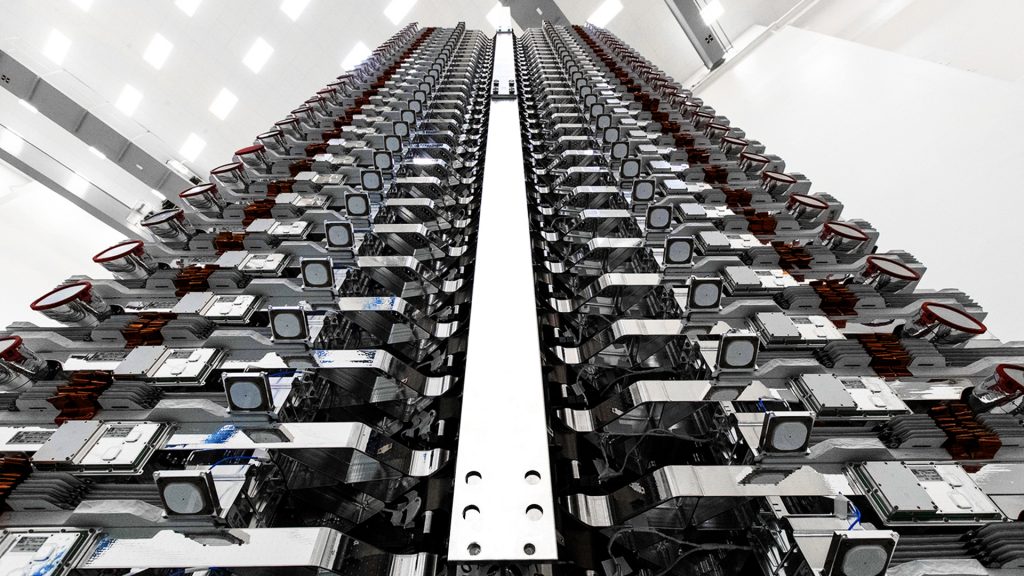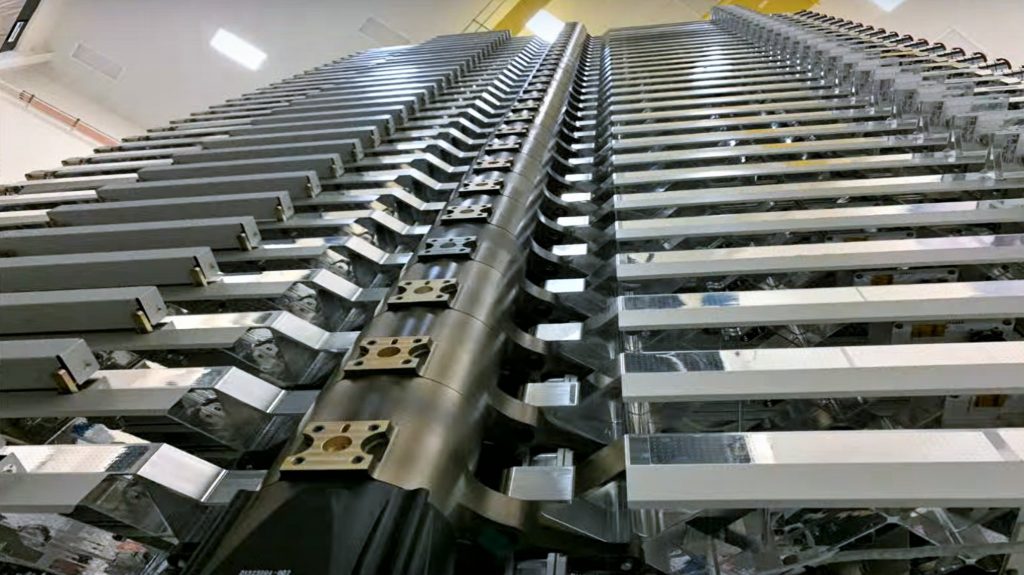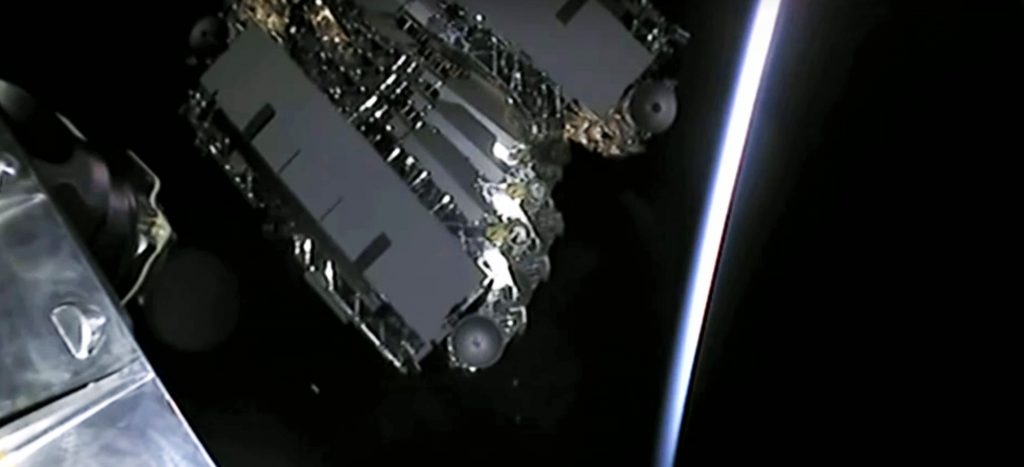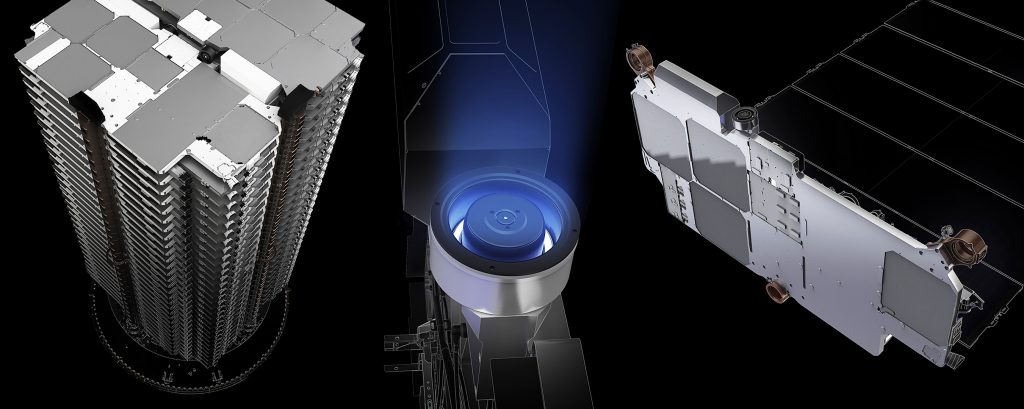Just hours ago, SpaceX successfully launched its second batch of 60 Starlink satellites, featuring a variety of upgrades as part of the move from v0.9 to v1.0 spacecraft. During SpaceX’s launch webcast, the hosts revealed a number of intriguing new details about those upgrades, shedding a bit more light on what exactly has changed.
SpaceX launched its first dedicated Starlink mission in May 2019, placing 60 “v0.9” satellites in low Earth orbit (LEO) in what was essentially a beta test at an unprecedented scale. At the time, SpaceX and CEO Elon Musk disseminated a substantial amount of information, essentially taking the veil off of (part of) the company’s Starlink satellite program. In terms of the basics, Starlink v0.9 satellites were said to weigh approximately ~225 kg (500 lb) apiece, although the final mass – said to be the heaviest payload SpaceX had ever launched – suggested that that figure excluded the mass of krypton propellant.
All told, Musk said that the payload weighed ~18.5 tons but never clarified whether that was in imperial or metric units, leaving a potential range of 16,700-18,500 kilograms (36,800-40,800 pounds). In general, Musk was quite confident that SpaceX’s custom-built phased array antennas were effectively the best in the world even in their v0.9 beta-test iteration. Additionally, he noted that inter-satellite optical (i.e. laser) links would have to wait a generation or two before becoming part of the operational constellation.
Ch-ch-ch-changes
With SpaceX’s Starlink-1 launch, the second 60-satellite mission, the company debuted Starlink ‘v1.0’ satellites with a range of changes and upgrades that fall under two main categories: structures and communications.
Prior to the November 11th webcast, SpaceX’s official pre-launch press kit was far less revealing than Starlink v0.9’s but did note that v1.0 satellites have been upgraded to be “100% demisable”. This means that when each spacecraft reenters Earth’s atmosphere, everything down to the last shred of mylar is now expected to burn up before reaching the ground, reducing the (already miniscule) risk of debris harming people or property. Similarly, SpaceX implied several months before launch that v1.0 spacecraft would include tweaks to limit their reflectiveness after the astronomy community stoked fears about potential impacts.


Aside from a general improvement to the overall visual fit-and-finish of the v1.0 spacecraft, SpaceX’s official comments on the matter indicated that the most substantial changes between v0.9 and v1.0 were more related to each spacecraft’s advanced electronics and payloads. In the case of Starlink, each satellite’s primary payload is a high-performance suite of electronically-steered phased array antennas. Initially developed to improve the flexibility of tracking and scanning radars used by military fighter aircraft, phased array antennas (and radar) allow multiple beams to be aimed without physically moving the antenna.
SpaceX says that Starlink v1.0 satellites added a number of Ka-band antennas alongside upgraded Ku-band hardware similar to what was installed on Starlink v0.9. Ka and Ku refer to similar but different communications frequencies, with Ku-band generally offering greater reliability and cloud/rain tolerance, while Ka-band is a bit more sensitive to environmental factors but offers a substantially higher theoretical bandwidth.


According to SpaceX engineers speaking during the Starlink-1 launch webcast, Starlink v1.0 satellites offer an unexpected 400% increase in overall bandwidth, meaning they can theoretically transmit four times as much data per any given second. Additionally, Starlink v1.0 satellites were said to feature antennas with twice as many steerable beams, meaning that they can effectively serve two times as many regions simultaneously. It’s unclear if the addition of Ka-band antennas is the sole source of these substantial improvements.
Furthermore, during the Starlink v0.9 launch, SpaceX CEO Elon Musk indicated that the 60 satellites represented a bandwidth of more than 1 terabit per second (Tbps), translating to ~17 Gbps per satellite. More likely than not, Musk was speaking aspirational and the v0.9 satellites actually represented more like ~200-300 Gbps worth of throughput, with the additional of Ka-band antennas and perhaps general technology upgrades bringing v1.0 satellites to a nominal ~17 Gbps apiece.
For now, 60 Starlink v1.0 satellites are now in orbit and are rapidly spreading out after their bizarre but effective blob-style deployment. With any luck, all 60 will successfully deploy their solar arrays and begin propelling themselves towards their final operating orbits with krypton-fueled ion thrusters. Stay tuned for updates from SpaceX!
Check out Teslarati’s newsletters for prompt updates, on-the-ground perspectives, and unique glimpses of SpaceX’s rocket launch and recovery processes.

https://www.teslarati.com/spacex-starlink-satellite-upgrade-more-bandwidth-more-beams/
2019-11-12 09:57:48Z
52780432544522
Tidak ada komentar:
Posting Komentar